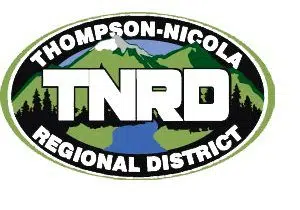
A Kamloops based wildfire expert has co-authored a study on the growing impact of fires in Canada over recent decades, published in the esteemed scientific journal, Science.
Dr. Mike Flannigan is the scientific director of Thompson Rivers University’s Institute for Wildfire Science, Adaptation and Resiliency. He worked with seven other researchers to explore why fires burned more severely in Canadian forests from 1981 to 2020 and how these patterns changed over time.
Flannigan and his colleagues demonstrated in the piece that dry fuel significantly increased fire severity, climate change had the biggest impact on northeastern and northwestern Canada, and severe fires occurred more frequently in the summer — yet there were also intense fire days during the spring and fall.
“This paper shows that fires are becoming more severe pretty well all across Canada,” said Flannigan. “Most pronounced in the Northwest the northeast and mostly due to what we call fuel fuel aridity, basically dry fuels. And as we get hotter and drier during the fire season, this is leading to more intense fires and more severe fires. By severe fires, I mean the impacts on the landscape, whether vegetation, you know and even like the stability of the soil, because if you kill all the trees and all the vegetation, you get some rain, you get mud flows, you get flooding. As we saw in the Cariboo, sometimes significant landslides and fire can play a role in this. And the more severe the fire, the more severe the impacts. And we’re just seeing it in spades, and the trend is it’s going to continue.”
“In Canada, 3% of our fires burn 97% of the areas impacted by fire. I’m going to do the stats for BC, but I expect they’re quite similar. Much of this happens on days of extreme conditions. Hot, dry and windy conditions. So that’s what extreme is, and that’s when fires occur,” Flanigan told Radio NL. “And one thinks of Jasper in 2024. In 2023 with the Shuswap and West Kelowna. Lytton in 2021.”
“From 2017 to 2024, there has been more area burned compared to the previous 67 years… I think BC is kind of the tip of the spear in terms of changes compared to the rest of Canada.”
“I’m not saying that every year is going to be a bad fire season. I’m not sure what 2025 will be like yet, okay, but I’m saying the trend is we’re going to see more bad fire years, and only going to get worse with time, because things are getting hotter and drier and means the vegetation, stuff that burns, is drying out, and there’s more of it linked to these more intense, severe fires.”
Flannigan says there was nothing surprising that he and his colleagues found through putting the study together. “This is completely what I expected. But errors are getting more severe because we’ve been seeing it, and this is just quantifies it. But to your question, what can we do? There are things we can do.”
He used the example of FireSmart practices. “It’s an excellent program that needs to be mandatory in high risk locations… You’re only as strong as your weakest link. If you do fire smart and your neighbor doesn’t, those embers come they burn your neighbor’s house down, then it burns your house down because it spreads structure to structure.”
“We have to do that fire prevention like fire bans. We’re quite good at Forest closures. That’s where you close the forest, no industrial activity, no recreational activity, very unpopular, but very effective at reducing human caused fires. And so these are things that we can be doing,. Power lines is another area we can see improvement and make it more difficult for fires to start from power lines, because we’ve seen power lines cause all sorts of problems around the world.”
Other important findings include: All 10 Canadian ecozones, like the boreal plains and the northern Arctic, experienced more severe fires, affecting six per cent of areas studied, and the last 20 years (2001-2020) were worse for severe fires than between 1981-2000. The extreme fire season of 2023 showed similar patterns, but with more areas experiencing severe fires.







